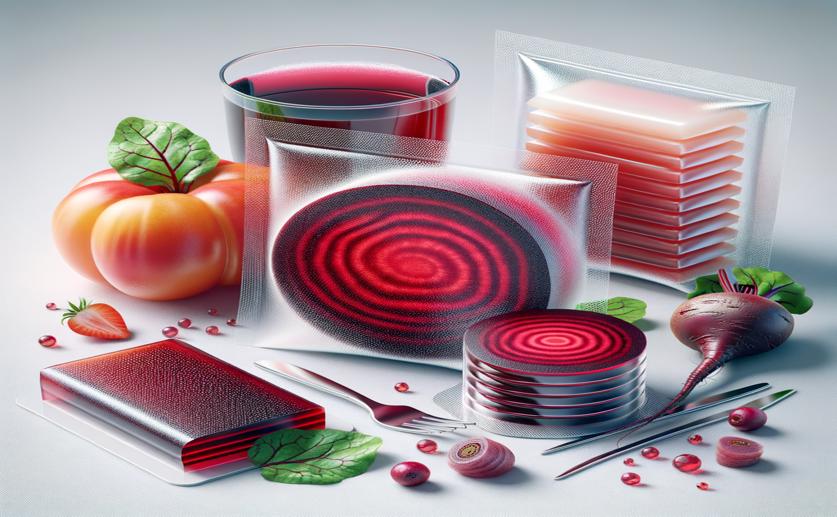
Smart Food Packaging Using Gelatin and Beetroot Extract Films
Jim Crocker
24th July, 2024

Image Source: Natural Science News, 2024
Key Findings
- Researchers from Kermanshah University of Medical Sciences developed an edible film for food packaging using gelatin, HPMC, and red beet betalain
- The film changes color to indicate food spoilage, providing a visual cue for consumers about the freshness of beef and shrimp
- The addition of betalain improved the film's solubility, water vapor permeability, mechanical properties, and antioxidant activity
AgricultureSustainabilityBiotech
References
Main Study
1) The application of film based on gelatin/hydroxymethyl cellulose and red beetroot betalain in smart food packaging.
Published 23rd July, 2024
https://doi.org/10.1177/10820132241266112
Related Studies
2) Betalains and their applications in food: The current state of processing, stability and future opportunities in the industry.
3) Physico-mechanical and antimicrobial properties of tragacanth/hydroxypropyl methylcellulose/beeswax edible films reinforced with silver nanoparticles.
4) Development of xanthan gum/hydroxypropyl methyl cellulose composite films incorporating tea polyphenol and its application on fresh-cut green bell peppers preservation.
5) Smart packaging systems for food applications: a review.



 25th April, 2024 | Greg Howard
25th April, 2024 | Greg Howard